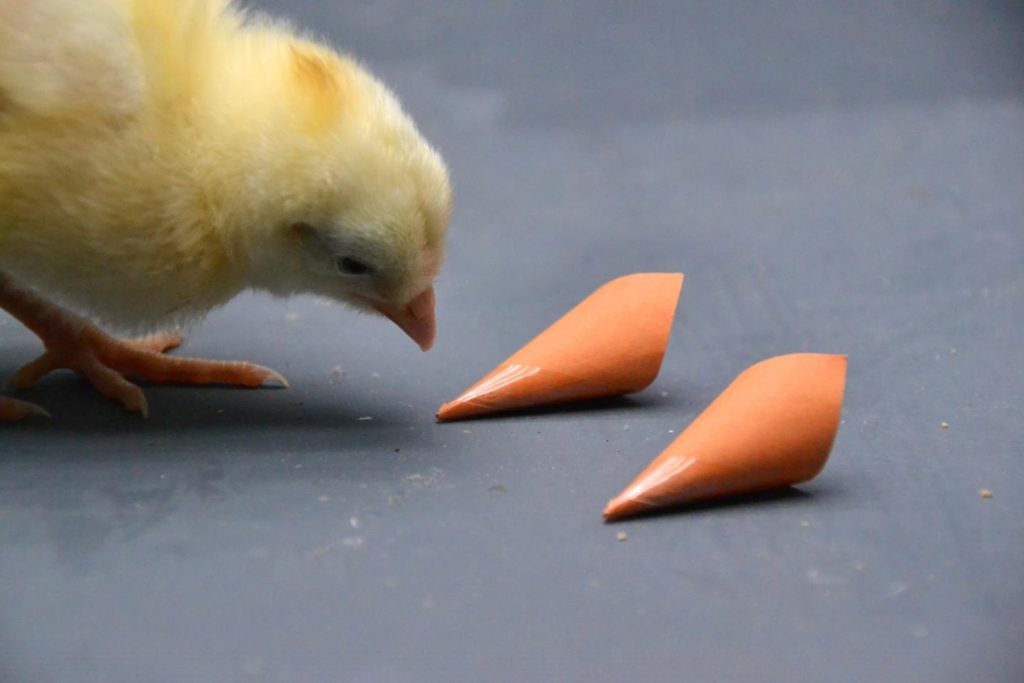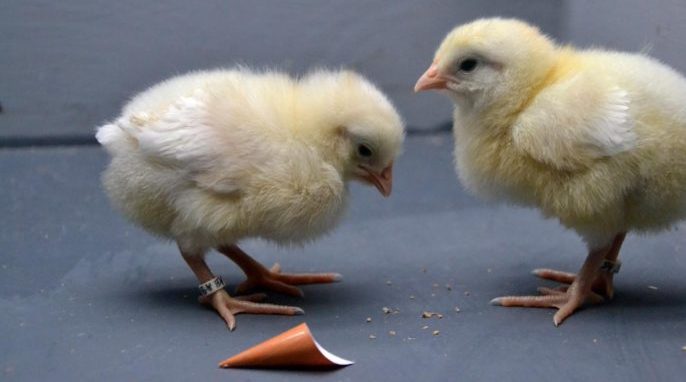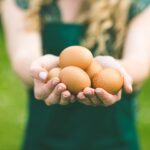Chickens Use Color Vision to Find Food, Pick Mates
Have you ever wondered how chickens see the world? Did you know that chickens use color vision? Get the answers to these and more questions.
Have you ever wondered how animals see the world? Do they see the same colors we do? Does the color of an object change when the light around it changes? A new study finds that chickens rely on color vision and color constancy—the ability to see an object as remaining the same color despite changes in external lighting—to find the right food and spot suitable mates.
Picky Chickens Use Color Vision, Color Constancy
What we perceive as an object’s color depends on the reflective properties of the object and the ambient lighting. During different times of the day, the amount of sunlight changes. Without color constancy, chickens would see berries, for example, in different colors, depending on the color of illumination. Along with chickens and humans, honeybees and goldfish have also been found to show color constancy.
“There are no well-controlled modern studies of colour constancy in birds, despite their presumed strong reliance on colour vision for many behaviours,” said Peter Olsson, lead researcher of the study at Lund University, Sweden.
Picking the Right Color
Olsson’s team trained chickens under white light to receive food by choosing from three colored containers, red, yellow, and orange, with only the orange container containing food. Then, in the first experiment, they changed the light in the room to different shades of red to see if the chickens still picked the orange-colored container. In the absence of color constancy, the chickens would be confused and pick containers randomly.
“Our study differs from other studies on animal colour constancy in that we tested how much illumination change the chickens could tolerate. So we changed the illumination more and more, compared to the training illumination, until the chickens could no longer remain colour constant.”
In the second experiment, the researchers introduced a greater contrast of colors—redder and yellower shades—for the containers that did not have food. This enabled the researchers to see if color constancy improved for the chickens when there was greater color contrast between the containers.


It turned out that chickens use color vision to select the right food container despite changes in the external lighting to shades of red. And the chickens that were trained to distinguish between containers of a larger color difference were able to remain color constant in a wider range of color shifts compared with the chickens that were trained with containers with a smaller color difference. Interestingly, the changes in lighting for which the chickens remained color constant in the lab were larger than the light changes they would face in the wild.
Other factors also affected how the chickens performed in the tests, including the training procedures and the time the birds were allowed to adapt to a light before choosing a container. In some light conditions, longer adaptation times improved a chicken’s ability to pick the right container. Immediate choices were not correct, but with five minutes of adaptation to the light before being presented with the containers, the chickens were able to select the container with food.
Although little is known about how color constancy is achieved—even in humans—as well as how chickens use color vision, there are several possible explanations. One possibility is that the photoreceptors in the retina adapt to parts of the image and then adjust signals to provide more accurate information about the contrasts, explains Olsson. Another explanation could be that the brain expects certain known objects to be of a specific color. Olsson gives the famous example of humans who perceive bananas to be yellow, despite strong changes in lighting, but not other unknown objects that are also the same color as bananas.
How does the color constancy in chickens compare with that of other animals? The researchers analyzed similar color-constancy experiments with goldfish and honeybees and found that chickens are able to display color constancy with wider changes in external lighting. Color constancy plays a key role in enabling chickens to select ripe food suitable to eat and to pick high-quality mates.
Humans probably possess better color constancy than that of chickens. Olsson was easily able to identify the right container when the chickens were unable to so. However, he cautioned that it is difficult to compare humans with chickens because this experiment is an artificial task for chickens.
Olsson’s team suggests that future color-constancy studies in animals should use an approach similar to the ones used in this study to enable comparisons between species and populations. “If we can figure out how animals achieve colour constancy, we can perhaps improve the understanding of how humans do it, and we can inspire new ideas for how to develop imaging systems with simple mechanisms to achieve good colour constancy as well.”
Watch this short video of the experiment:
Reference
Olsson P, Wilby D, Kelber A. 2016 Quantitative studies of animal colour constancy: using the chicken as model. Proc. R. Soc. B 283: 20160411. http://dx.doi.org/10.1098/rspb.2016.0411
About the Author
Neha Jain is a freelance science writer based in Hong Kong who has a passion for sharing science with everyone. She writes about biology, conservation, and sustainable living. She has worked in a cancer research lab and facilitated science learning among elementary school children through fun, hands-on experiments. Visit her blog Life Science Exploration to read more of her intriguing posts on unusual creatures and our shared habitat. Follow Neha on Twitter @lifesciexplore.


